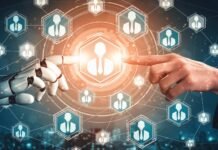Where have we been?
Organizations have been talking about and attempting to take advantage of workforce analytics for close to 30 years. Back then, the introduction of multidimensional array technology and pivot tables led people to believe that it would be simple to stand up a meaningful set of HR/workforce metrics. This was not the case. Some organizations succeeded in putting together a fairly short and static set of reported KPIs. However, the technology was not flexible. A data scientist would need to lay out a rubric to try to account for every permutation that an HR or line of business (LoB) executive would be interested in querying. There are not enough hours in the day to put something like that together. Today, we know that it takes sophisticated technology to utilize data efficiently and answer the universe of potential questions.
Data resides everywhere throughout the enterprise. There are sources of data specific to the workforce including those found in and around human capital management (HCM) systems and services.
But there is also relevant data outside of HR’s oversight. It is difficult to do truly meaningful workforce analytics without access to operational data. And HR needs reliable access to as much data as is available across the enterprise.
Historically, the HR function is not typically built upon an analytical skill set. Building out KPIs is not necessarily in the sweet spot for HR practitioners. As a result, larger enterprises may engage business analysts to help with this process, while midsize and smaller organizations are just left behind. HR clearly needs an easier way to query data and gain relevant insight.
Another stumbling block in the march toward achieving true workforce insight is the perception by management that there are no easy-to-use answers to the workforce analytics question. In IDC’s 2021 survey of HR decision makers, 40% indicated that they have not implemented HR analytics because they are unaware of any solutions that could help. It is important that HR executives stay informed of the latest in HCM and workforce related capabilities.
Where are we today?
HR faces many challenges today. The pandemic has turned the workforce on its head. There are 10 million jobs open in the U.S. and only 7 million unemployed workers. You would think that there is a job for everybody seeking one. But this is not the case. The nature of work is changing — and so are worker attitudes. People may not want to go back to the job they had pre-pandemic. Some have been out of the workforce so long that their skills have gone stale. Others cannot go back due to family commitments. Talent acquisition is a real struggle here in 2021. Holding onto your critical talent is the key to success. You need a happy and engaged workforce to minimize the amount of new hiring needed. HR and management teams would greatly benefit from faster, more accurate, and more meaningful information about the workforce.
The good news is that artificial intelligence (AI) is helping us to bring forward meaningful analytical insight. Equipped with tools that use AI, HR can now enter the realm of augmented analytics. Augmented analytics employs AI, machine learning (ML), and natural language processing (NLP) to automate data processes normally done by a specialist or a data scientist. With augmented analytics, a user of workforce analytics merely needs to ask a question and the technology will work the magic to return meaningful insight.
Ask any HR business question in natural language—using text or voice in a simple, search-like experience—and then hear and see the results immediately. For example, an HR specialist may be dealing with an unusual number of resignations in the Northeast. In the past, HR would look at various charts and graphs to drill into the data to understand the problem. With augmented capabilities, a specialist can simply ask, “Why are we seeing higher than usual turnover in the Northeast region?” An augmented solution will put all its capabilities to bear on the task in order to come back with a meaningful and actionable answer to the question.
Imagine the possibilities
It has been a long road to get to where we are today in terms of turning people data into actionable insight. It’s important that HR and LoB management understand that there are solutions today that can tackle this once-impossible challenge quickly and accurately. There is nothing holding enterprises back from having the right information about their workforce at the right time and in the right place. While there are some unique workforce challenges in 2021, there are also some very powerful solutions that will help HR navigate its way to success.
For more such Updates Log on to www.hrtechcube.com
ABOUT THE AUTHOR

Lisa Rowan
Lisa Rowan, Research Vice President, HR software & services Research at IDC.












